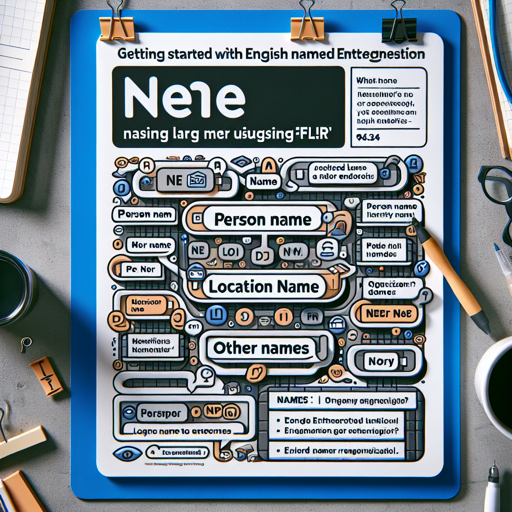In the world of natural language processing (NLP), Named Entity Recognition (NER) plays a crucial role in understanding the context of the text. In this blog, we’ll explore how to leverage Flair, a popular NLP library, to efficiently identify named entities in English sentences. We’ll walk through the process of using Flair’s large NER model, and troubleshoot common issues you might encounter along the way.
What is Flair’s Large NER Model?
The Flair NER model is designed to classify text into four main categories:
- PER: Person Name
- LOC: Location Name
- ORG: Organization Name
- MISC: Other Names
Using state-of-the-art XLM-R embeddings, this model boasts an impressive F1 score of 94.36, making it a reliable choice for various applications.
Demo: How to Use Flair for NER
Let’s dive into how you can use this model in your own projects. Follow these steps:
- Install Flair using pip:
pip install flair - Load the required modules and make predictions:
from flair.data import Sentence from flair.models import SequenceTagger # Load the tagger tagger = SequenceTagger.load('flair/ner-english-large') # Create an example sentence sentence = Sentence('George Washington went to Washington') # Predict NER tags tagger.predict(sentence) # Print results print(sentence) print('The following NER tags are found:') for entity in sentence.get_spans('ner'): print(entity)
This script will output the recognized entities in the sentence George Washington went to Washington, highlighting that George Washington is a person and Washington is a location.
The Analogy: A Detective Finding Clues
Imagine you are a detective, solving a mystery. In every sentence you read, you search for clues that can tell you more about the characters, places, and organizations involved. Each clue, be it a person or a location, represents a critical piece of information that helps you understand the storyline. Just like the Flair model, your keen observation skills help you tag these elements—thus unraveling the thread of the plot!
Training the Model: Step-by-Step
If you’re interested in training your own model, here’s a concise breakdown of the steps:
- Load the CONLL-03 dataset.
- Specify the type of tag you’re interested in (NER).
- Create a tag dictionary based on the dataset.
- Initialize transformer embeddings using the xlm-roberta-large model.
- Set up the Sequence Tagger with fine-tuning options.
- Train the model using an optimizer like AdamW.
Here’s a snippet of the training script:
import torch
from flair.datasets import CONLL_03
from flair.embeddings import TransformerWordEmbeddings
from flair.models import SequenceTagger
from flair.trainers import ModelTrainer
# Load the dataset
corpus = CONLL_03()
# Define tag type
tag_type = 'ner'
tag_dictionary = corpus.make_tag_dictionary(tag_type=tag_type)
# Initialize embeddings
embeddings = TransformerWordEmbeddings(model='xlm-roberta-large', layers='-1', fine_tune=True)
# Create the tagger
tagger = SequenceTagger(hidden_size=256, embeddings=embeddings, tag_dictionary=tag_dictionary, tag_type='ner')
# Train the model
trainer = ModelTrainer(tagger, corpus)
trainer.train('resources/taggers/ner-english-large', learning_rate=5e-6, max_epochs=20)Troubleshooting Common Issues
If you encounter issues while using the Flair library, here are some troubleshooting tips:
- Ensure that you have the required dependencies installed. Missing or outdated libraries can cause errors.
- Check that you’re running the correct version of Python, as certain libraries may have compatibility issues.
- If the model fails to load or predict, verify your internet connection—Flair often requires online resources.
- Consult the Flair issue tracker for known bugs or issues that may not be documented in the README.
For more insights, updates, or to collaborate on AI development projects, stay connected with fxis.ai.
Conclusion
Named Entity Recognition is a powerful tool in the NLP toolbox, and utilizing Flair’s model can significantly ease the process. By following this guide, you should be well on your way to implementing NER in your projects.
At fxis.ai, we believe that such advancements are crucial for the future of AI, as they enable more comprehensive and effective solutions. Our team is continually exploring new methodologies to push the envelope in artificial intelligence, ensuring that our clients benefit from the latest technological innovations.

